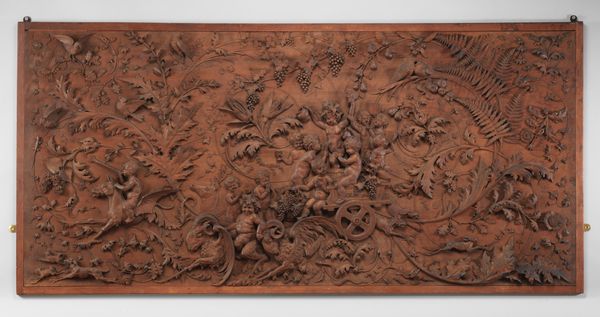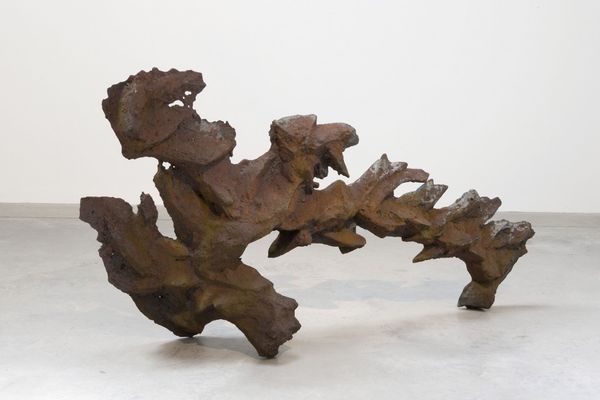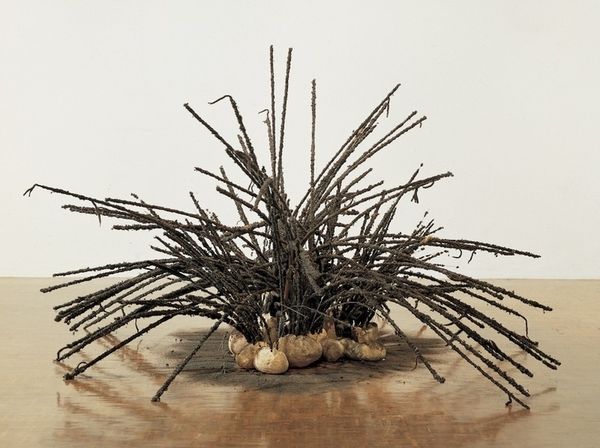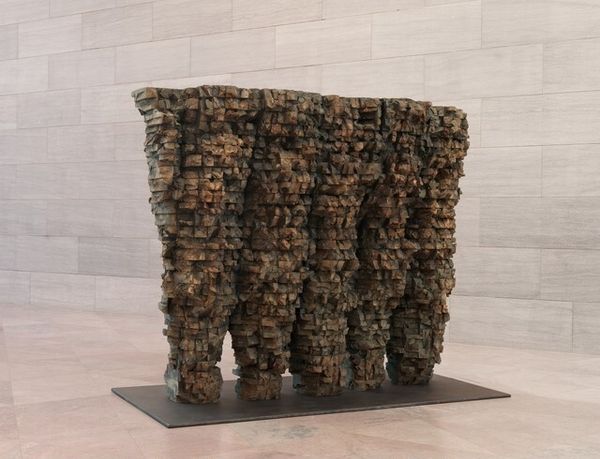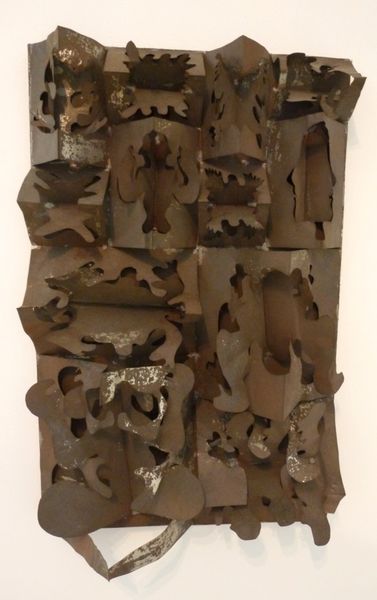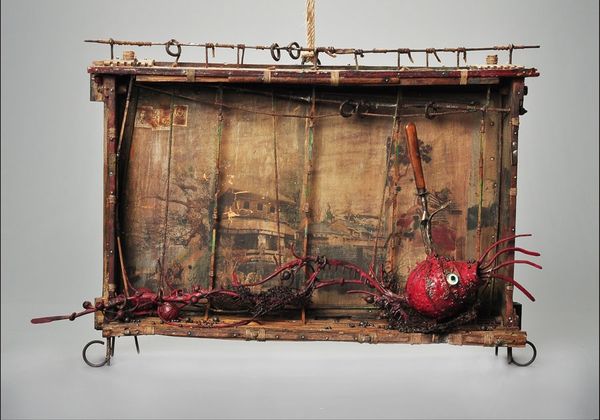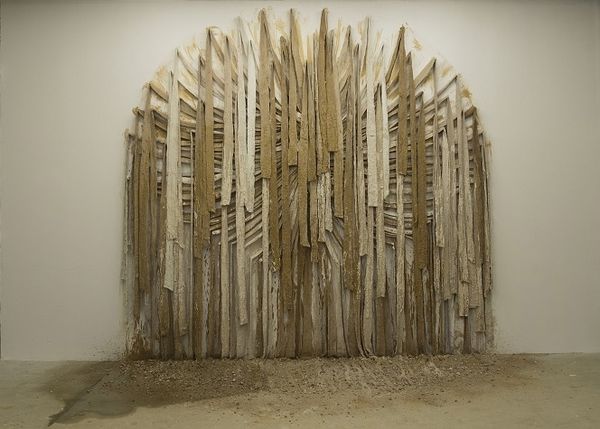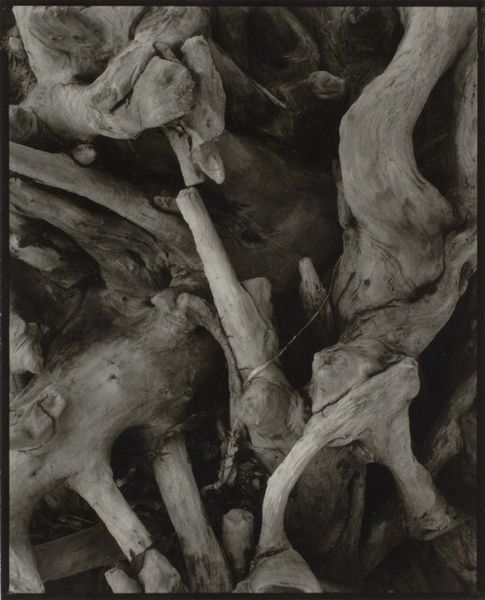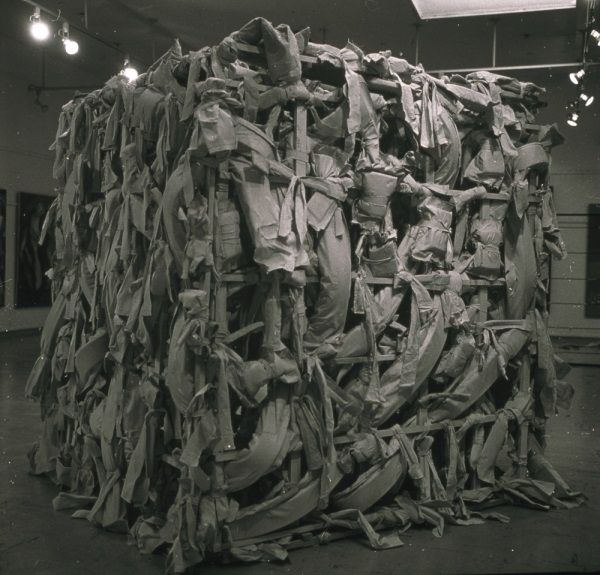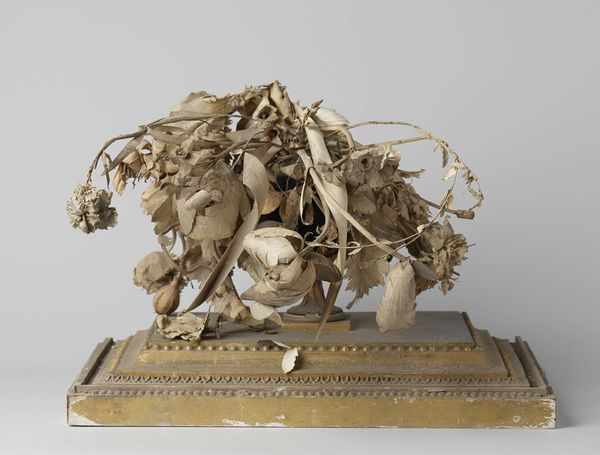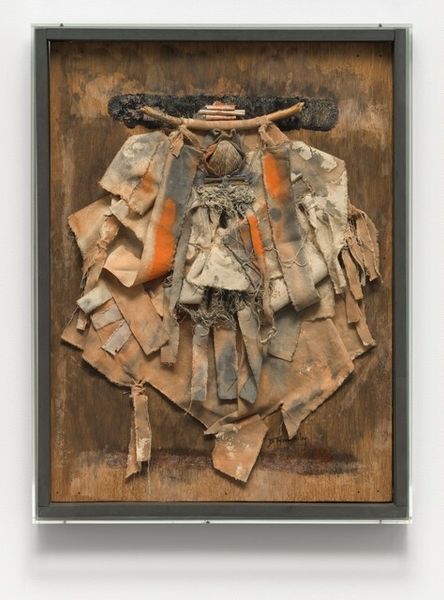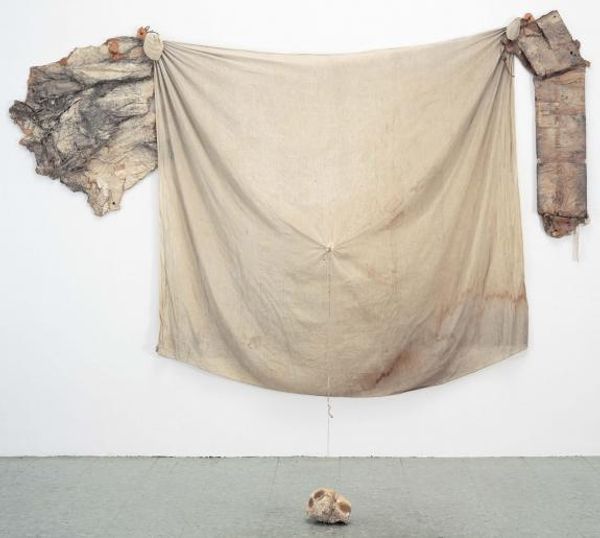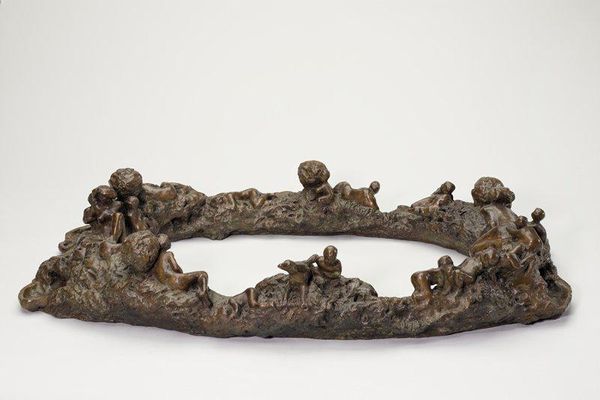
mixed-media, panel, assemblage, found-object, sculpture, mixed-media
#
african-art
#
mixed-media
#
organic
#
panel
#
assemblage
#
sculpture
#
textured
#
found-object
#
sculptural image
#
sculpture
#
mixed-media
#
texture
#
natural texture
#
organic texture
Dimensions: 23 3/4 × 39 1/2 × 6 in. (60.33 × 100.33 × 15.24 cm)
Copyright: No Known Copyright
Editor: This is an "Emblem Panel" by an Ejagham artist, made around the mid-20th century, here at the Minneapolis Institute of Art. It's an assemblage of found objects. I'm immediately struck by the organic feel and, honestly, the slightly macabre arrangement of what look like animal skulls. How do you interpret this work? Curator: What I see is a powerful statement on materiality and memory. The Ejagham people are known for their masquerade traditions and artistic expressions tied to social structures. This panel, with its accumulation of organic materials – bones, perhaps other remnants of life – really compels us to consider the social implications of these natural textures. Do you think this evokes something beyond the simple depiction of animal remains? Editor: I do see more than just animal remains. There's a clear structure; everything is meticulously arranged, almost like a story being told with these objects. Is it perhaps alluding to the circle of life, death, and rebirth so common in indigenous cultures? Curator: Exactly. By framing these discarded objects, the artist transforms them. The panel then functions as a visual text— a space to negotiate social and ecological concerns, histories, and ideas around mortality. Does considering it from this angle alter your initial impression of it? Editor: Yes, it shifts my focus from the initial shock of the skulls to a deeper contemplation about the life cycles of these animals and their role within the broader cultural narrative of the Ejagham people. Curator: The act of collecting and arranging is significant. Who gets to tell the stories? Whose lives and deaths are remembered? In this way, it raises pressing political questions about historical representation. It really makes you think about art as an intervention into cultural memory. Editor: I see it. Thanks, now it feels like a form of visual activism and protest. Curator: Absolutely. I’m so glad that looking at art through an intersectional lens was helpful for you today. Editor: Me too. I will definitely approach my next research project in new ways.
Comments
minneapolisinstituteofart almost 2 years ago
⋮
This assemblage of objects is the sacred emblem of an all-male association called the Leopard Spirit Society. The association served as a traditional form of law enforcement in the past and continues to be an important social institution today. The emblem was attached to the center pillar of a society’s lodge, the structure in which members would hold their meetings. Its basic configuration is a woven palm-leaf mat, adorned in the middle with a drum. It carries a ceremonial spoon and a ritual broom of the type used to sweep away forces intending to harm members. Most striking are the numerous skulls and bones attached to the mat, remains of animals consumed at ceremonial meals.
Join the conversation
Join millions of artists and users on Artera today and experience the ultimate creative platform.
